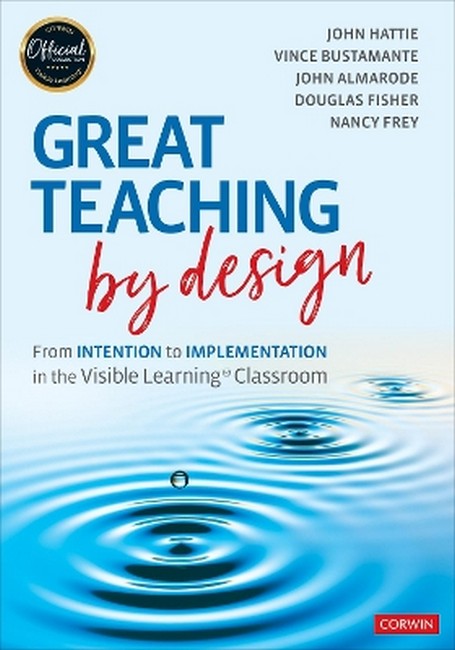Tables, Figures, and QR Codes Acknowledgments About the Authors Introduction Chapter 1: Implementing What Works Best The DIIE Model as Shared Language for Implementation Ways of Thinking and Motivations Teacher Decision Making Ways of Thinking and Decision Making Motivation and Decision Making Teacher Motivation Motivation and Implementation A Shared Language for Great Teaching Chapter 2: Diagnosis and Discovery The Who Behind the Learning Standards of and for Learning as the Starting Point Initial Assessments Development of Initial Assessments Teacher Noticing Chapter 3: Intervention This Is Not Deficit Thinking Identifying the Skill, Will, and Thrill: Where Are Our Learners Now? Applying the Goldilocks Principle High-Probability Interventions Aligning High-Probability Interventions With Skill, Will, and Thrill High-Probability Interventions for Enhancing Skill High-Probability Interventions for Enhancing Will High-Probability Interventions for Enhancing Thrill Chapter 4: Implementation Fidelity to Clear and Visible Learning+ (R) Goals Student Awareness of Success Criteria Success Criteria and Aligning the Intervention Necessary Dosage of an Engaging, Challenging, and Authentic Learning Experience Adaptations Through Adaptive and Compensatory Approaches Quality Delivery in an Environment for Implementation Fostering an Environment of Mistakes Chapter 5: Evaluation A Broader View of Evaluation Planning for Evaluation Evaluating the Evidence The Role of the Post-Assessments in Evaluation Collecting Evidence From Post-Assessments Evaluating the Evidence From Post-Assessments Conclusion References Index
Request Academic Copy
Please copy the ISBN for submitting review copy form
Description
"In order to maximize their learning, which will help them move beyond their own expectations, students need impactful teaching. No one has done more research in this area than John Hattie. In Great Teaching by Design Hattie and his co-authors show us that there is so much more we can learn about great teaching, and they provide us with step-by-step instructions on how to do that." -- Peter DeWitt, Ed.D., Author/Consultant "Teaching techniques are not universal-their outcomes are too contextual. The impact of even the most credible strategy will, in large part, be determined by why it is selected, when it is applied, and how it is received. An understanding of evidence will, of course, help-and there is no one in the world who has helped educators identify what works best more than John Hattie has-but even the best evidence leaves us with the challenge of implementation. That is why this book is so important. The authors show readers how to turn a good idea into great learning for all students. It is a book so practical, profound, and timely that I recommend it as seminal reading for all educators." -- James Nottingham, Creator of the Learning Pit and author of 9 books about teaching and learning "Great Teaching by Design puts the teacher at the heart of the decision-making process, demonstrating that the deliberate actions teachers take can and do propel students forward in their learning. It demystifies the idea that excellent teachers are born knowing what to do to ensure excellence in their classrooms. The authors encourage concrete and specific action, supported by an easily understood model and underscored by quality research, that will enable a teacher to experience confidence and success in designing quality learning experiences for all learners." -- Nicole Lafreniere, Director of Curriculum and Assessment "Impactful teaching and learning must not be left to chance! The practical applications inherent in Great Teaching by Design, particularly through the DIIE model, cast clarity on how to implement what makes the biggest impact on student learning." -- Timothy P. Cusack Ed.D., Deputy Superintendent "Great Teaching by Design uses an asset-based lens that allows educators to gain insight and further extend their understanding of using evidence and intention to design learning. There are multiple examples that show educators how to find a relatable connection from their own learning journey. This book provides strategies and tools to ensure educators are intentionally designing programs that meet the needs of a diverse student population." -- Brandon Pachan, Elementary School Teacher

